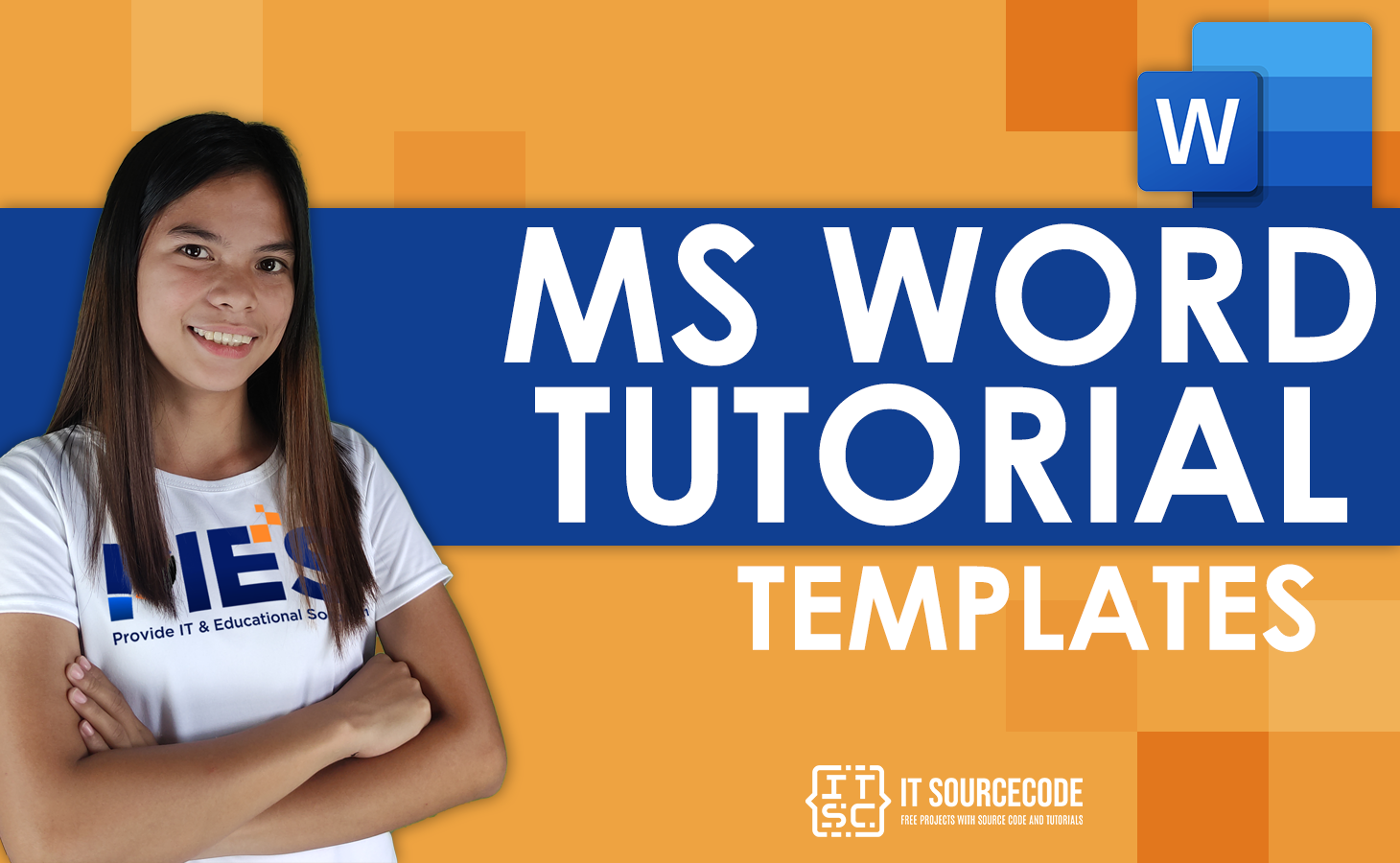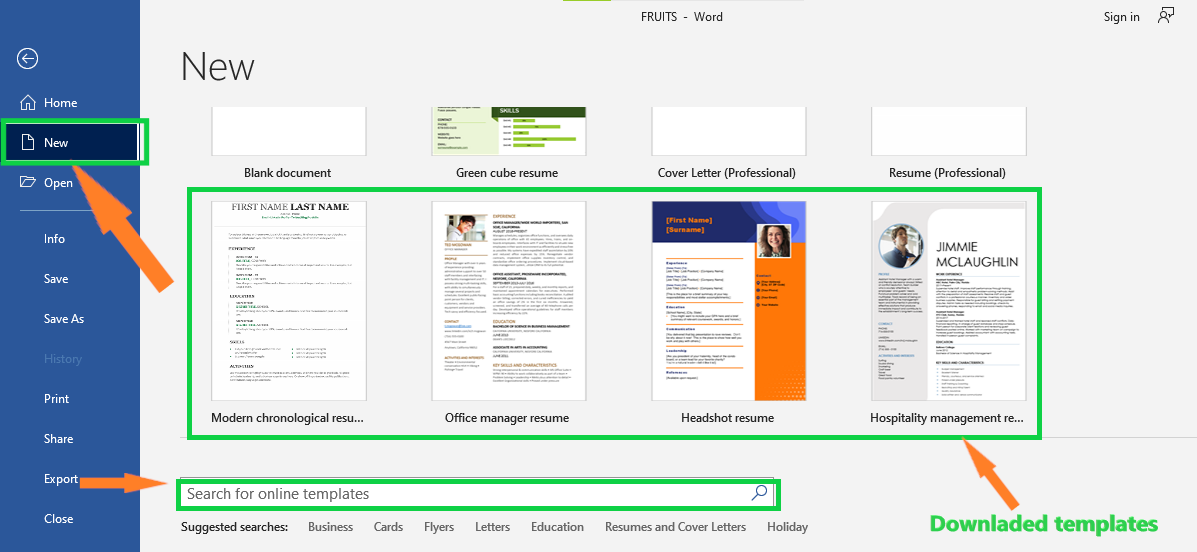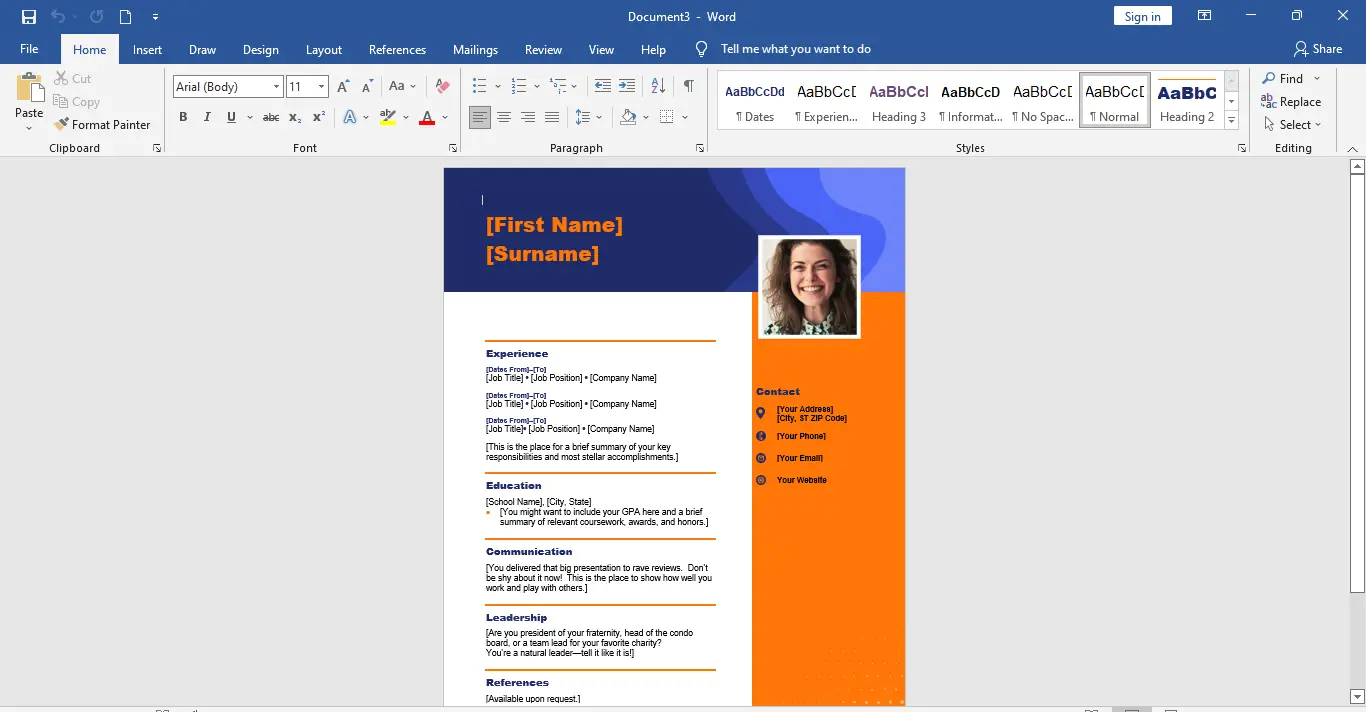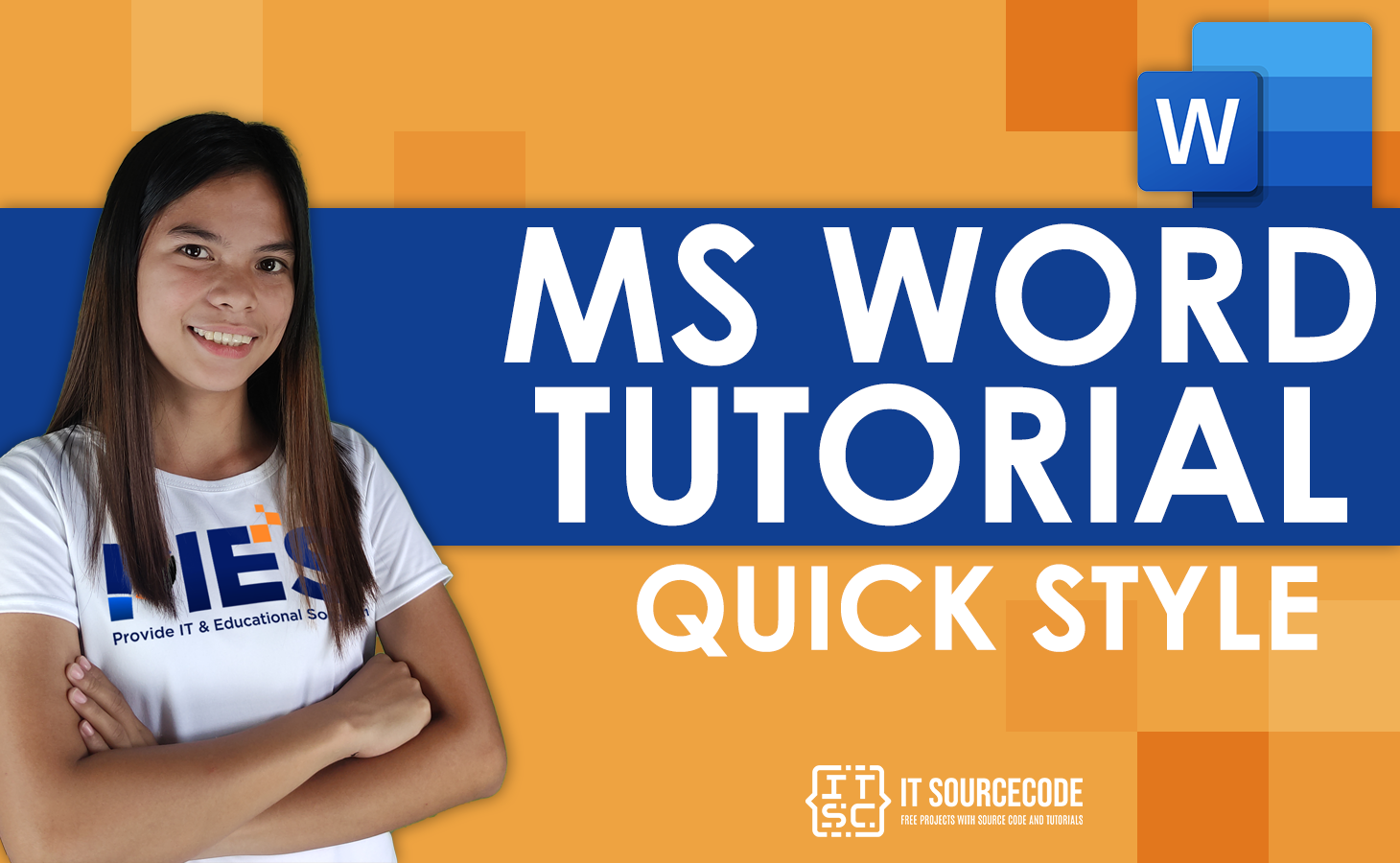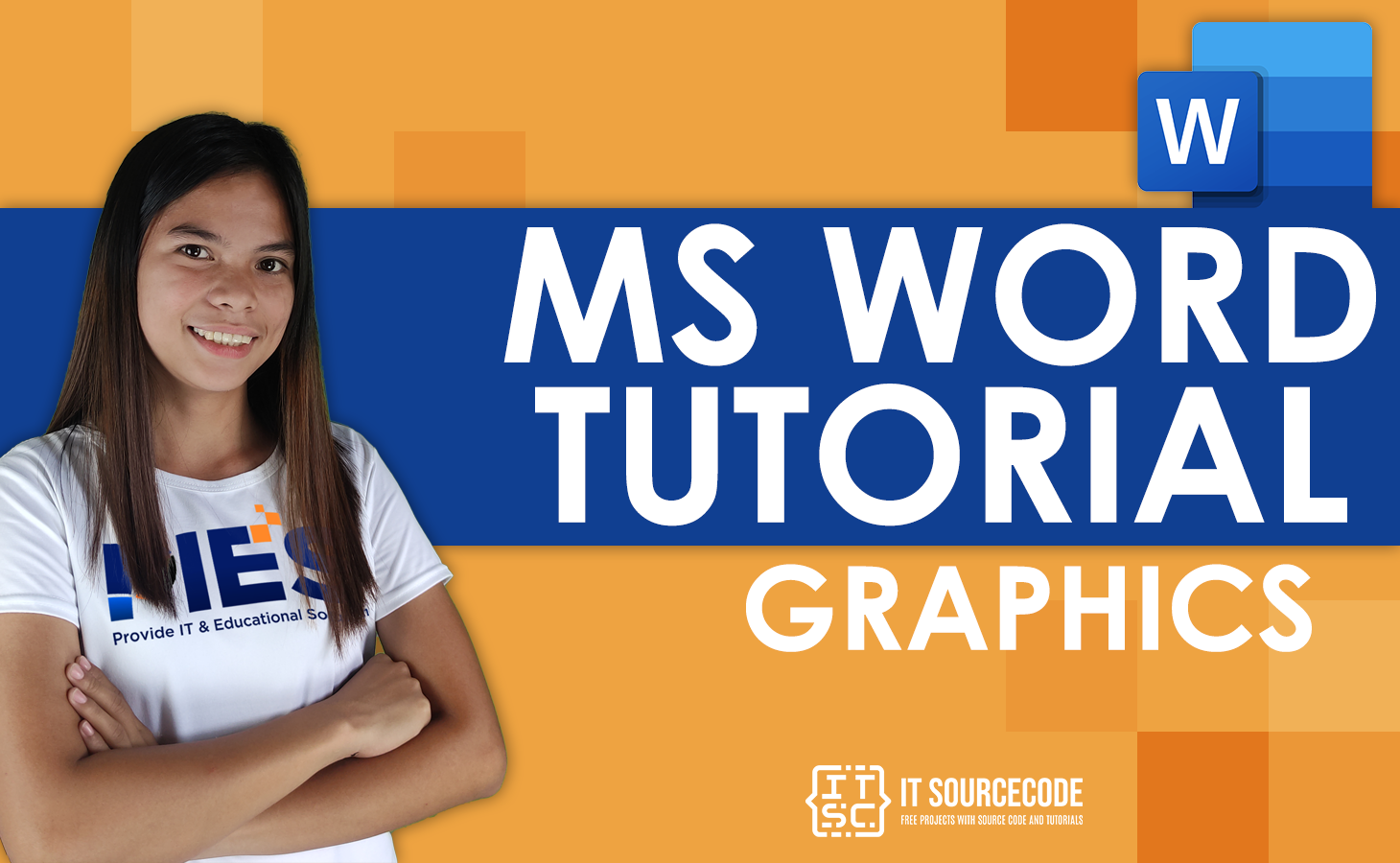In this chapter, we’ll talk about how to use Word 2019 templates. The Microsoft Word template is a set of styles that tell Word how to format paragraphs, titles, and different levels of headings.
For your Word document, you can use one of the templates that already exist, or you can make a template that can be used for all of your company’s documents.
Table of contents
What are templates in MS Word?
A template is a document type that, when you open a template type of document, makes a copy of itself. One common document that is written in Word is a business plan. You don’t have to start from scratch when making a business plan. Instead, you can use a template with the page layout, fonts, margins, and styles already set up.
Follow these steps to find a template in Word and use it:
- Click New on the File tab.
- Choose one of the following from the list under Templates: To use one of the built-in templates, click Sample Templates, click the template you want, and then click Create.
They give a document a basic shape and can be used to avoid having to make the same format over and over again in different documents.
Why do we use MS Word templates?
Templates ensure everything is the same by having a set structure and layout. When you use a template to make a document, it will have the same layout as the template. The styles tool in Word is a great way to keep the formatting of the text in your document uniform.
Here are five good reasons:
- Efficiency
- Consistency
- Accuracy
- Automation
- Professionalism
How to Use Existing Template
We will now understand how to use an already existing template for your newly created word document. Here are the following steps to do.
- Step 1 − Click the File tab and then click the New button to start a new document. This will show the Available Templates.

- Step 2 − Under “Sample Templates” in Microsoft Word, you can find a list of templates, or you can go to office.com and find hundreds of templates in different categories.
For our document, we will use sample templates. To do this, we need to click on Sample Templates. This will bring up a gallery of templates. You can use the option on office.com to choose a template that fits your needs.

- Step 3 − You can look through a list of available templates and then double-click on one of them to use it for your document. We will choose a template for a resume for looking for a job.
You should choose the Document Option in the third column when choosing a template for your document. This opens your document with settings that have already been set. You can change the document title, author name, heading, etc., to fit your needs.

How To Create New Template
You can make a new template based on what you need, or you can change an existing template and save it to use as a template in the future. The file extension for a Microsoft Word template is.dotx. You can make a new template by doing the steps below.
- Step 1 − To use an existing template to make a new one, click the File tab and then click the New button. This will bring up a list of Available Templates from which to choose. Choose any of the templates that are available and open it with the Template Option.
- Step 2 −You can now change an open template to fit your needs and save it with the.dotx extension, the standard extension for Microsoft Word Templates.
You can also start with a new document to make a template. To open a new document, click the File button and then click the New button. Double-click Blank Document under Available Templates to make a new template for a document. Save the template with a unique name and the extension.dotx.
The created template can be saved wherever you click, and if you want to use it, just double-click on the template file, and a new document based on the template will open for you.
Summary
In the end, we’ve learned how to use templates in MS Word and what those terms mean. We also know that there are sample templates that we can use in our document to make it look more professional and presentable.
Meanwhile, if you want to learn more about working on tables, see the previous tutorial on how to resize tables and how to merge and split tables in Microsoft Word. You can browse those guides if you are having a hard time working with your tables in a document.
We hope this tutorial helps you as you format your documents in MS Word.
PREVIOUS
NEXT

